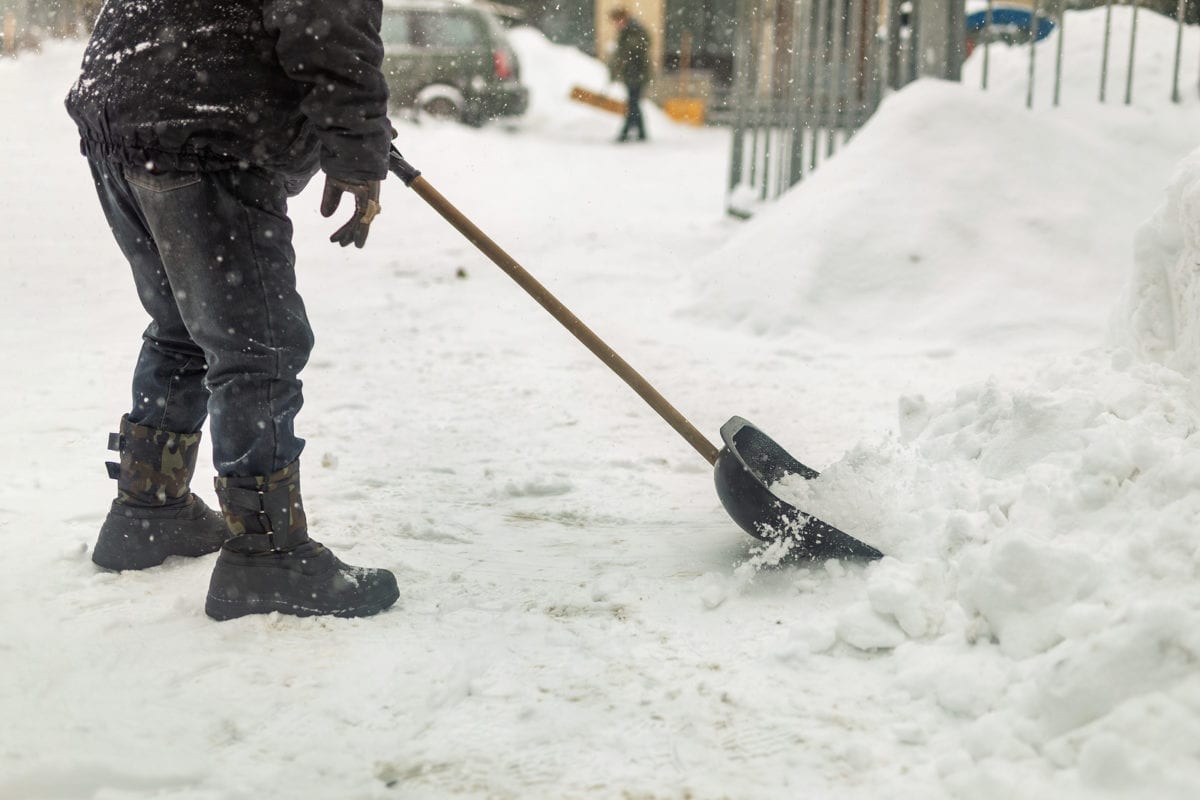The winter weather is still here to stay. Snow and ice will be blocking the streets outside your business. Harsh winters mean slippery concrete roads and sidewalks, causing problems for potential customers and employees entering and exiting your business.
To prevent unnecessary risks, companies always invest in cleaning out the surrounding roads, generally through street salting. However, salt is known to crack and break concrete over time, and metal surfaces suffer corrosion when exposed to street salt. Plus, rock salt can be hazardous to plant life and animals.
For that reason, it’s recommended to consider other methods of melting the ice around your premises. You’re not only making your sidewalks safer but also making it easier for your concrete paving contractor to do repairs later.
1. Start by Shoveling
It may take some elbow grease, but shoveling before doing any kind of de-icing will get rid of the snow on top and facilitate clearing the ice beneath. Even regions of the sidewalk without ice are safer to walk on without slushy snow getting into your shoes.
Removing the ice itself with a shovel can be a challenge though, so look to other methods once the snow is gone. Wear layers of clothing that you can take off individually. While it may be cold at first, the hard work will warm you up a bit.
2. Use Isopropyl Alcohol
Take a bottle of 70% isopropyl alcohol and spray it on the frozen road. More diluted solutions could work but will take longer. After half an hour of letting the alcohol sit, shovel off the broken-up ice.
3. Heated Welcome Mats
Ice-melting mats can be found on the market. Place them on stair steps or other paved areas like driveways. While expensive, this option reduces the need to shovel and melt snow in the treated areas, and they pose no threat to concrete, pets, or people. Just expect to remove and replace them the next time you get a visit from a concrete paving contractor.
4. Cat Litter
You read that right. Cat litter provides traction to an icy surface, reducing the possibility of slipping on it. A biodegradable brand is recommended as it will not damage concrete or the surrounding environment.
Alternatively, a mixture of gravel, chips of wood, and straw can do the same job. Any kind of gritty, non-slip material works well.
5. An Ice Blower
If icy streets are a major problem for your business and you’re willing to invest heavily in snow removal, consider picking up a heavy-duty ice blower. They’re less strenuous to use than snow shovels and do the job efficiently. Remember that dual-stage gas blowers are more effective than single-stage electric ones.
Consistent treatment with a blower makes travel to your business safer and reduces the necessity of calling the concrete paving contractor every month.
6. Get to Picking
For heavy, compacted snow or stubborn ice blocks, there’s no better tool than an ice pick. Ice chisels are available at hardware stores and are immensely effective at breaking down large chunks of ice.
Choose Better De-icers
While most street salts are harmful to the concrete and environment, certain brands containing magnesium chloride or potassium chloride don’t cause skin irritation or damage to plant life. Turn to these options if you find the convenience necessary.
Melrose Paving | Concrete Paving Contractor | Toronto and the GTA
No matter how well you clear out snow and ice, water damage to the concrete is bound to happen through the harsh winter months. For a concrete paving contractor with almost 40 years of experience, contact us at Melrose Paving for a guaranteed, quality job done right.
- Snow and ice pose a safety hazard to your customers. Street salting is a popular method for dealing with ice but can also damage concrete.
- As an alternative, consider heated mats, isopropyl alcohol, shoveling, or an ice blower.
- Ultimately, you will have to repair your concrete roads. Call up the concrete paving contractor Melrose Paving if your business operates in Toronto, Mississauga, Hamilton, or other surrounding areas.


